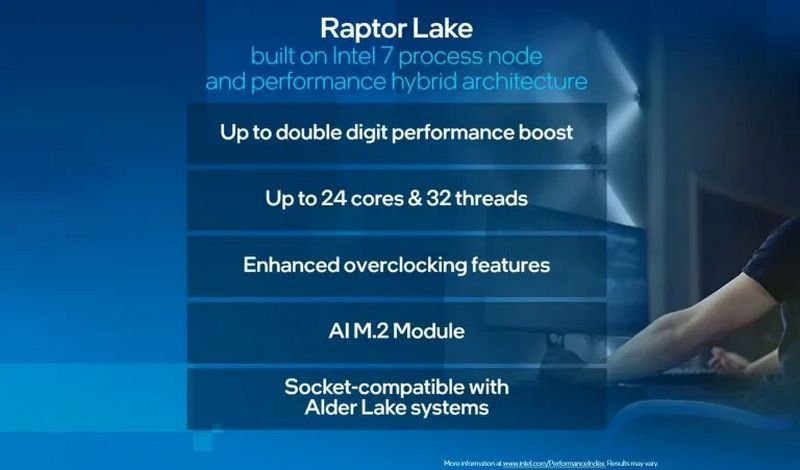Raptor Lake will be built using a further improved 10ESF (Intel 7) process node, with up to 8 performance and 16 efficiency cores in a 24-core, 32-thread configuration. Raptor Lake will support DDR5-5600 memory while retaining support for DDR4 memory and will be compatible with existing 600 series motherboards with LGA1700 slots.
The 13th generation desktop processors Intel Raptor Lake will bring a performance increase of up to 15% over Alder Lake-S. They’re keeping the Intel 7 process, but the 24 cores and 32 threads as the maximum configuration is a hint at what’s to come in September.
It was the YouTube channel Moore’s Law is Dead that sounded the alarm, and it seems there will be room for improvement for the Intel 7 process. Raptor Lake is the 13th generation of Intel processors that will be released in late 2021 and will bring new performance and features.
Intel Raptor Lake will leave Alder Lake – an anecdote
This information comes from Moore’s Law is Dead, a YouTube channel that always has good sources. The number of performance cores (P-cores) will remain the same, but the number of E-cores will increase. They are talking about numbers between 8-15%, which would mean a 30-40% increase in multi-threading compared to Intel Alder Lake-S.
The Raptor Cove, which will be the P-cores in these chips, would still be an improved version of the Golden Cove; even then, they would offer a big increase in IPC. Moore’s initially talked about an increase in power-to-consumption ratio and core frequencies, but no further changes in core frequencies are expected after some KS versions reached up to 5.5 GHz.
The efficient cores are still the Gracemont cores, with the difference that they are doubled: 8 P-cores and 16 E-cores. These 13th generation processors will be compatible with the LGA1700 socket and, we assume, with Z690 and B660 chipset boards. According to the source, we will see new chipsets that will natively support DDR5 RAM frequencies above 5600 MHz.
The Intel Raptor Lake-S is expected to launch in the third quarter of 2022, while the 13th generation mobile processors (Raptor Lake-H/HX or U) are expected to be released in late 2022.
Eventually, this generation would compete with the AMD Ryzen 7000 (Zen 4). So we will continue to see Intel with a 10nm process against chips with a 5nm node, it will be a nice battle!
The real upgrade will come with Intel Meteor Lake
We’re being bombarded with enormous hype about Intel Meteor Lake, so we’ll let you know. The brutal performance boost comes with the 14th generation, due out in 2023. The arguments are the Intel 4 process (7nm), the Meteor Lake architecture, and the increase in processor cores and threads.
It is possible that Intel will try to bolster its offering with the Crestmont Efficient Cores and Arc Battlemage iGPUs. The term “SoC” is popping up more and more in Intel’s presentations, so we can expect a change in the desktop platform.
There’s even talk of a voltage regulator called DLVR (Digital Linear Voltage Regulator) that would increase efficiency by working in parallel with the motherboard’s voltage regulator. The idea is to reduce the voltage by an average of up to 160 millivolts to reduce the power consumption of the entire machine.
